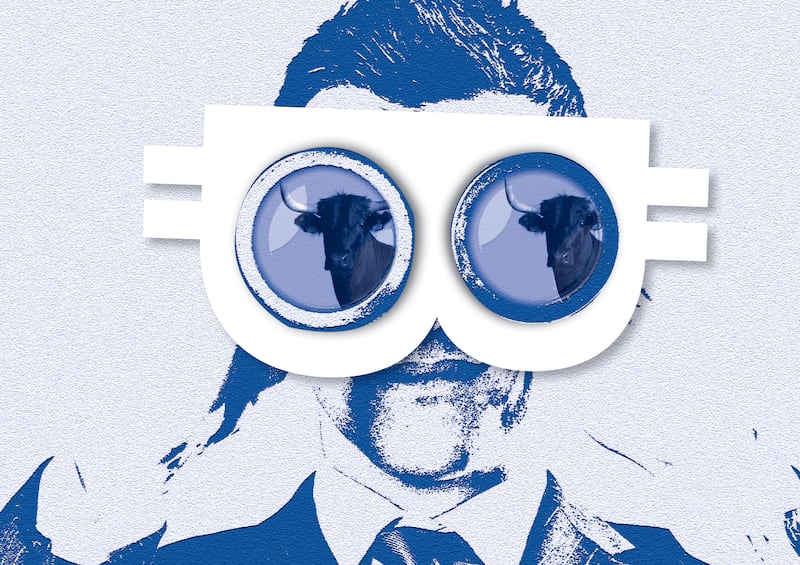Bitcoin speculation has gone into overdrive this year with two major events predicted to increase prices. We've had the first. Now we’re about to get the second.
If history is a guide, it could drive Bitcoin from around $66,000 today to as high as $361,152 within a year.
While that probably isn’t going to happen, as ever with Bitcoin, you never know.
The crypto winter of 2022 is now a fading memory. The price jumped 150 per cent last year and opened the year at $44,172.
Despite falling from its April 8 peak of $71,618 in recent days, it’s still up 50 per cent year-to-date.
Crypto got its first big boost in January when US regulatory authorities gave the green light to a new breed of exchange-traded funds investing in the Bitcoin spot price. This allowed investors to get exposure to BTC price movements without the risk and bother of buying actual coins.
The 11 approved spot Bitcoin ETFs amassed net inflows of around $12.1 billion by March 31, according to BitMex, making this the most successful ETF launch in history.
On April 19, we get the second event, and this could be just as big. It is known as the Bitcoin “halving”.
What is Bitcoin halving?
Bitcoin’s price movements can make the cryptocurrency’s behaviour seem completely random and unpredictable, yet that’s not entirely true.
One thing can be predicted: supply. The total number of Bitcoin in circulation will never exceed 21 million. That's baked into its algorithms.
In contrast to paper currencies, nobody can print more. If the supply could be increased, the investment case would collapse.
Today, around 19.68 million coins have been mined, about 93.72 per cent of the total. The pace at which new coins are about to be mined is about to fall sharply.
To understand the halving, it's important to understand how new Bitcoins are created, or rather, “mined”, says Simon Peters, market analyst at online trading site eToro.
“Effectively, powerful computers race to solve complex maths problems, which, once complete, add another block to the chain,” he explains.
Miners are verifying the legitimacy of transactions and being rewarded for it with Bitcoin, referred to as a “mining reward” or “block reward”.
Every time 210,000 blocks are mined, the block reward is halved.
“With new blocks taking about 10 minutes to be added to the chain, this happens roughly every four years,” Mr Peters says.
The first halving was in November 2012 when the reward of 50 Bitcoin per block was cut to 25. It halved again to 12.5 Bitcoin in July 2016 and 6.25 in May 2020.
By 2040, the reward will fall to zero, and all 21 million coins will have been mined.
This month’s halving will cut the reward to 3.125, cutting the annual supply inflation rate from 1.7 per cent to 0.84 per cent, Mr Peters says.
By limiting supply and making it predictable, halving underpins Bitcoin’s value.
“Historically, this has been the case with Bitcoin, with previous reward halvings ushering in a new bull market,” Mr Peters says.
Within a year of the 2016 halving, the price soared 285 per cent, from $650 to $2,502.
After the 2020 halving, it climbed 562 per cent in a year, from $8,572 to $56,764, according to crypto tax experts CoinLedger.
The road ahead
Andy Wood, a crypto expert at Crypto Tax Degens, describes the halving as “Bitcoin tightening the belt, making each coin in circulation a bit more precious”.
“It could drive demand when everyone starts to realise there's not as much Bitcoin coming into the system as before,” he says.
This year’s halving may nevertheless be the most significant of all, predicts Thomas Perfumo, head of strategy at crypto trading platform Kraken.
“Afterwards, nearly 95 per cent of all Bitcoins that will ever exist will have been mined, while annual growth will fall to less than 1 per cent for the first time,” he adds.
Historically, Bitcoin prices peak between 12 and 18 months after a halving event. Yet, he cautions against anticipating a simple repeat, with Bitcoin touching highs even before the halving has happened.
“The market cycle is kicking off earlier, but history suggests we haven’t reached the end of the cycle either,” Mr Perfumo adds.
Talk of post-halving growth could be a self-fulfilling prophecy, increasing speculation and fear of missing out, says Manuel Villegas, digital assets analyst at Swiss private bank Julius Baer.
It arrives at a time when spot Bitcoin ETFs have triggered a supply squeeze, but he warns that other factors are at play, including “regulatory developments and market sentiment”.
Mr Villegas remains positive and suggests that any “short-term setbacks could be adequate entry opportunities” for investors.
Investors should treat bullish price forecasts with caution, says Alexey Efimov, an analyst at online trading broker Alpari.
“If $100,000 Bitcoin were to become reality, it probably won't happen overnight. It may well be a slow grind upwards, considering that much of the excitement surrounding this year’s halving has already been baked into current prices,” he adds.
Investor should take their time, rather than diving in on today's highs.
“We can't rule out a ‘sell the news’ price drop for Bitcoin immediately following this halving,” Mr Efimov says.
Matthew Weller, global head of research at City Index and Forex.com, says a breakout from Bitcoin’s recent $61,000 to $73,000 range is “inevitable” but could go either way.
“A bearish breakdown would open the door for $50,000, whereas a bullish breakout could quickly bring $80,000-plus into sight,” he adds.
It’s hard to say how much influence previous halvings had on the price, with so many other factors at play.
Given today's high price and market cap, there is a good chance that any increase will be lower. That's pure mathematics.
The first halving, in 2012, was the most spectacular. The price rose 8,000 per cent after a year but a repeat is impossible.
That kind of increase would push Bitcoin to a staggering $5.59 million and lift its total market capitalisation to more than $117 trillion, bigger than the entire global economy.
As ever, tread carefully, and only invest money you can afford to lose, at least half of it. Or possibly all.






